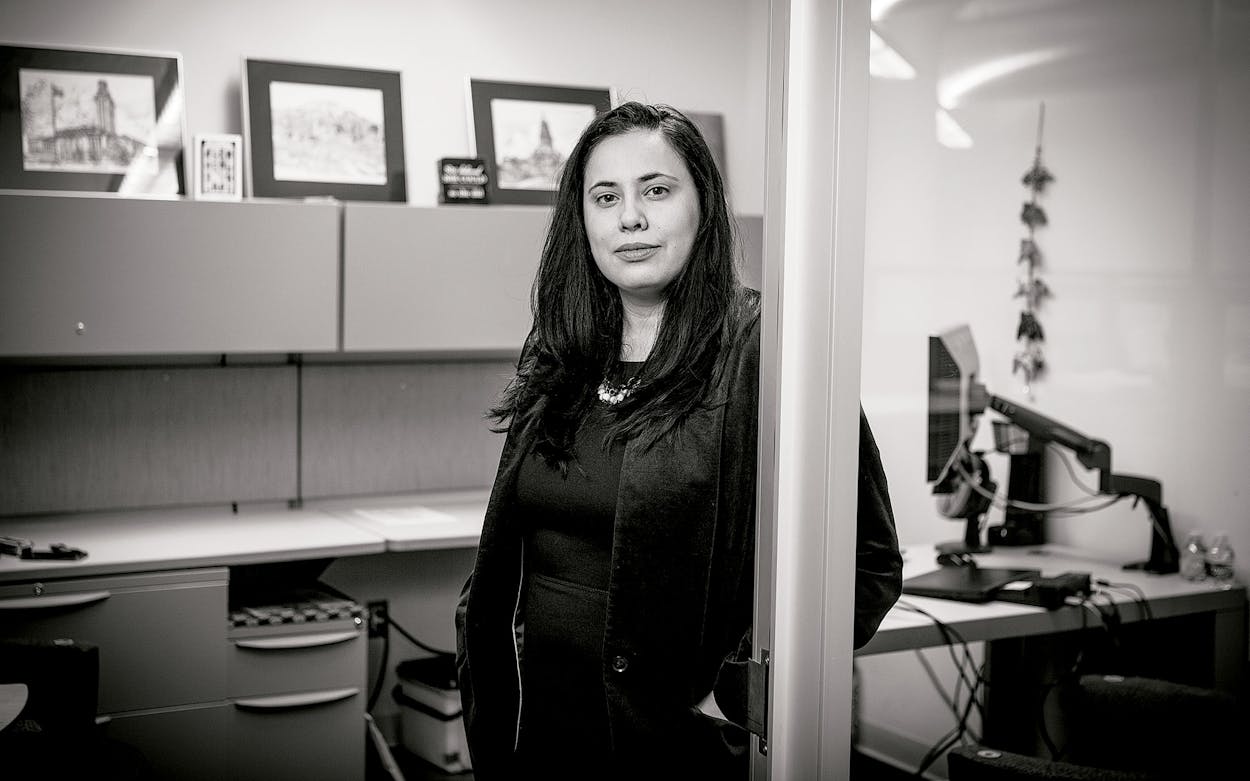I heard once that women and people of color must stop doing invisible work. That might have been the best advice I’ve received, although I admit that I still struggle with it. Women do many things in their field that they aren’t touting, but it’s added work. Even if you’re mentoring another woman, that’s added work that you take on. And that’s good work to take on, but it shouldn’t be invisible. People should know that you’re taking on these roles, so that when the time comes to promote strong leaders, they know that you’re out in the community meeting with people, that you’re mentoring other women, you’re doing this additional work.
When I was covering the cheating scheme in El Paso, one of the things that really resonated for me was that a lot of the students who were being targeted were English learners. I was an English learner growing up. My mom only spoke Spanish to me as a child. I learned English in school. That really resonated for me because I had that perspective that I was able to say, “This is important. This is an important issue for this community,” because there are so many kids out there like me who were raised in this way and who need to be heard.
I saw a lot of strong female reporters when I was coming up, but there were fewer women in leadership roles. It was great to have strong female reporters all around, but you also need to have strong female managers who can understand things on a different level. Women, just as people of color and journalists from different economic backgrounds, bring this immeasurable value to newsrooms, but one major obstacle that we face is that this is an industry that has long been dominated by men, and many times men hold those highest positions in newsrooms. Women, like anyone else, need role models. Part of that is to see women ascend, to know that, if you choose, you can start as a reporter and become an editor and eventually lead a paper. Women also understand on a different level the challenges of being a female reporter. A woman who’s been through some of those obstacles can walk you through and talk about how she’s dealt with such issues in the past. In a mentor, you need somebody who understands the challenges of having this position and moving up through the ranks. For a long time in newsrooms, you didn’t have that. You didn’t have women in those positions.
That’s starting to change in journalism. In Texas, three of the six newspapers in the state’s largest cities are now run by women. But if you think about it, I’m the second woman and the first Latina to lead the Times in its 137-year history. That’s not something to be proud of. That’s not providing women with the role models and the mentors that they needed over the years.
We need more opportunities for women, whether that means training on data reporting, investigative journalism, or mentorships. We also must find a way to engage some of the male leaders in these organizations and work with them to make sure that strong female leaders are coming up the ranks. I had male editors who valued what I did and valued my contribution so I did move up, but I don’t think that happens at every organization.
To see resources about female mentorship, getting involved in local issues, and what to do if you experience sexual harassment, read here.
More from this collection
The Women’s Voices Project
In a series of as-told-to conversations, two dozen Texas women talk about gender, work, and what needs to change for women in their home state. Read their perspectives here.






